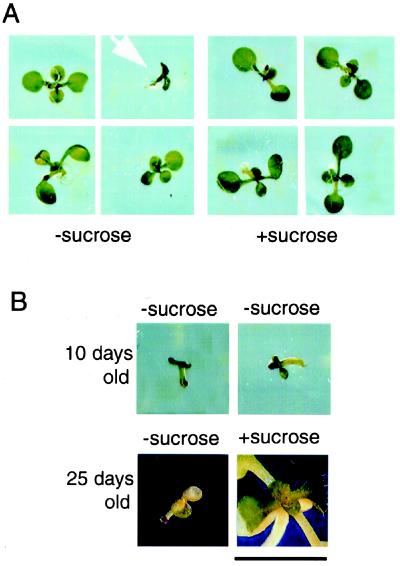Figure 2.
The arrested growth and sucrose rescue of suc2 mutant seedlings germinated without supplemental sucrose. (A) Segregating progeny of a suc2–1 heterozygote germinated without or with supplemental sucrose. With no sucrose, the 10-day-old homozygous mutant seedling (arrow) is much smaller and slower in development than its heterozygous and wild-type siblings, having only cotyledons and very short roots. In contrast, all seedlings grown with supplemental sucrose have fully expanded cotyledons and expanding rosette leaves, regardless of genotype. (B) Two suc2–1 homozygotes germinated without sucrose and then transferred to fresh plates either with or without sucrose. At 10 days, both seedlings show stunted growth, have short roots, and have not produced rosette leaves, in contrast to heterozygous and wild-type siblings (see A). Two days later, both seedlings were transferred to fresh media, either without or with sucrose. The seedling transferred to fresh media without sucrose did not produce rosette leaves and eventually yellowed and died. The seedling transferred to sucrose, however, was rescued. It started producing rosette leaves and a root. (Bar = 1 cm.)

